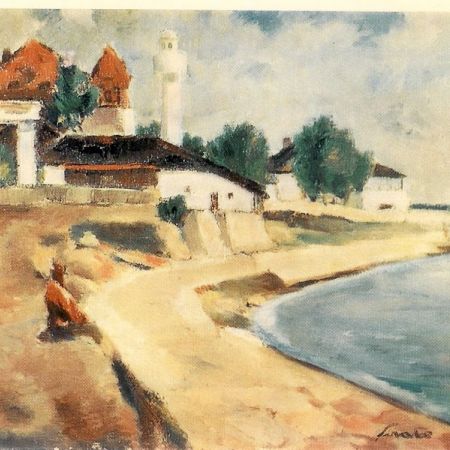He was an interesting Romanian painter, also known as a sketcher, who proved to be one of the most original and in fashion artisti of his time. Born in 1877 in Craiova, he made his artistic debut in his early years, when due to his native talent he had the opportunity of producing several posters for various events, as well as some illustrations for magazines and newspapers.
He was a good artist, very mature for his age, so in 1898 he moved to Dusseldorf, where he took his first litography lessons and in 1900 he returned to Bucharest. He stayed here until 1905, all these years studying at the Fine Arts School, and also became a well-known name in the press circles, as he continued to publish his drawings and sketches in various magazines. Since 1908 Sirato began to exhibit at the events organised by the Artistic Youth or the Romanian art, presented his works - paintings and drawings - at the official salons and in 1925 he was one of the founders of the famous Group of the Four, together with Tonitza, Stefan Dimitrescu, Oscar Han.
More and more popular, in 1917 he was appointed custodian at the National Museum of Folk Art, and the direct contact with the traditions, themes and techniques will leave it's mark on his latter work, as well as giving him some fresh, new ideas. Much later, in 1933, he would also start teaching at the Academy of Fine Arts in Bucharest, and the students were impressed and influenced by the experience and care of the much older painter.

Balcic Landscape
Over the years, Sirato won several prestigious awards and medals, both in his country and abroad, such as the Golden Medal at the Exposition Universelle in Paris, in 1937, the State Prize in Romania, in 1946 and several others. His works are impressive today due to their choice of colours, sure lines, original and distinct style - which was later imitated - and the broad choice of subjects.
Sirato produced a great number of works, on various themes, ranging from portraits to still lifes and landscapes, not to forget his unforgettable drawings and sketches, the first of his works which made him popular among art lovers. His compositions were rich in both colours and feelings, managing the create a beautiful impression and remarkable artistic touch, no matter of the subject. It time, he managed to have a strong and pleasant style, which was at the same time realist and evokative, romantic and strong. Many of the artistic ideals that he "built" for himself in time made their way in his articles, published in important Romanian magazines of the interwar period, which were somewhat of lessons of art history and theory.
The artist died in 1953 in Bucharest.
Photo : wikimedia commons
2008-07-29

































